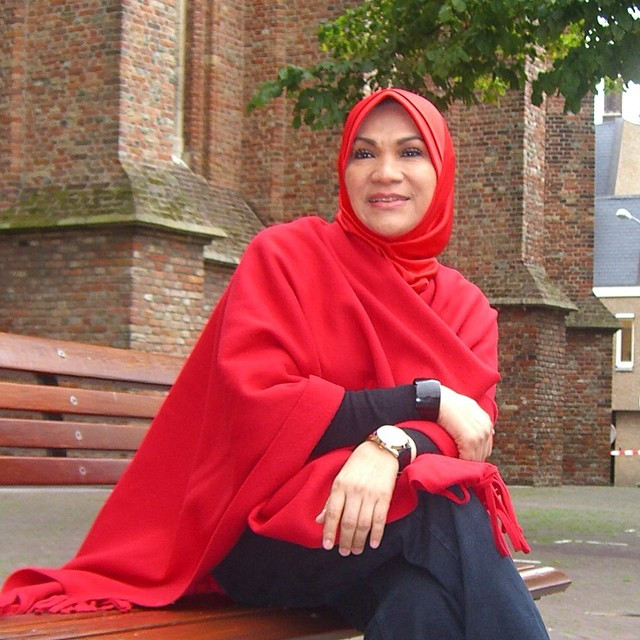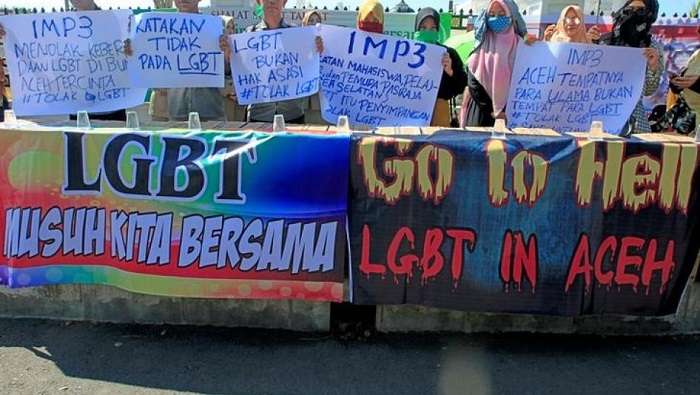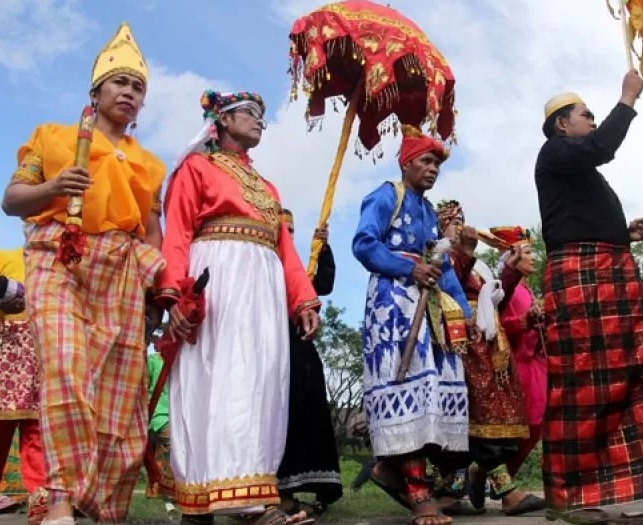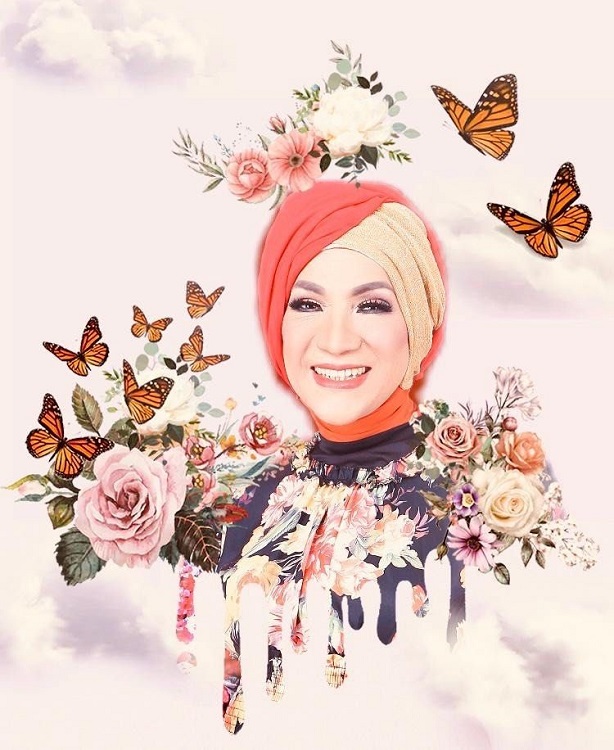In contrast to the national motto ‘Unity in Diversity’ and its history of tolerance, Indonesian sexual minorities are not respected
Saskia Wieringa
On 16 February 2022 the beloved singer, TV presenter, comedian and talk show host, Dorce Gamalama, passed away in a hospital in Jakarta at the age of 58. She had been diagnosed with COVID-19 and already suffered from Alzheimer’s disease and diabetes. Bunda (Mother) Dorce, as she was affectionately called, by her many admirers, had undergone gender affirmation surgery in 1983 and was one of the most famous trans women in Indonesia. She had actively campaigned for Joko Widodo (Jokowi) in the 2014 presidential campaign and was invited for dinner at the presidential palace in December 2015. She was, in life, respected in the highest national circles.
The gifted performer had expressed her wish to be bathed and buried according to the procedures for women. ‘I have become a woman since the surgery, so I should be bathed [and buried] as a woman,’ she had declared just a few weeks before her death, in a decision that sparked enormous controversy. The influential conservative MUI (Indonesian Ulama Council) insisted that Dorce be buried as a man, while the Muslim mass organisation NU (Nahdlatul Ulama) proclaimed that her personal choice had to be respected. Former president and prominent NU leader Abdurrachman Wahid (Gus Dur) had once said that Dorce should be happy with the gifts of Allah she had received. Yet ultimately her own family decided she had to be buried as a man. Why was her wish not respected?
A life in technicolour
Dorce was born as Dedi Yuliardi Ashadim in West Sumatera in 1963. Orphaned as a baby, Dorce was raised by her grandmother and aunt. Around the age of seven, Dorce realised she felt imprisoned in her body. As a teenager she started singing in the transwomen-led band Fantastic Dolls, dressed as a woman. At that time, she assumed the stage name Dorce Ashadi and added Gamalama after a mountain she had visited in Ternate. After undergoing sex affirmation surgery in Surabaya in 1983, her change of sex was officially recognised in 1986.

Dorce appeared in various movies, soap operas and TV serials. Her ‘Dorce Show’ on Trans TV was aired between 2005 and 2009. In 2005 Dorce released her autobiography, entitled Aku Perempuan: Jalan Berliku Seorang Dorce Gamalama (I am a Woman, the Complex Road of Dorce Gamalama).
She was an important role model for the LGBT community, though Dorce herself was more active in Muslim circles, even declaring that Bali bomber Imam Samudra was going to ‘heaven as a martyr’, after visiting him in prison. Glamorous as Bunda Dorce was, she was also known for her piety and charity. Not having children of her own, she adopted three children and supported hundreds of orphans. In 1990 she went on the hajj, proudly calling herself a hajjah (woman who has performed the hajj) from then on. She established Islamic boarding schools and the Al Hayyu mosque in East Jakarta. This was eventually where the burial rituals proper for a man were performed for her.
The backlash
Her popularity was at its height between 2005 and 2009. In this period, however, the first signs of a backlash against the growing visibility of the LGBT movement were becoming apparent and Dorce’s show was stopped. By the end of 2015 a state-sponsored hate campaign against the LGBT community erupted. Websites were shut down, activists were intimidated, gay parties were raided, and lesbian couples evicted from their rental homes.

In 2016, along with other transwomen, Dorce was banned from appearing on TV due to restrictions imposed by the KPI (Komisi Penyiaran Indonesia: National Broadcasting Company) on male-bodied performers dressing or acting in feminine ways. Alongside communism, ‘LGBT’ had become a bogeyman to mobilise people for political purposes. Secular parties, including Gerindra and NasDem, which sought to increase their credibility among the Muslim electorate and hardliner Islamist groups, contributed to this growing climate of homophobia. This is regardless of the fact that so far homosexuality in itself has never been illegal in Indonesia, apart from Aceh province.
Criminalising sexuality
In contrast to the regions colonised by the British, that introduced the so-called sodomy clause (Clause 377, prohibiting male-male sexuality) into their laws, following Dutch criminal law at the time Indonesian law only criminalises same-sex relations between an adult and a minor. Introduced in 1911 the article in the Dutch Penal Code, 248 bis, on pederasty was abolished in The Netherlands in 1971, but remains in force in its former colony until now, having been introduced in 1911. It is striking that while many so-called sodomites were persecuted or even executed in the Netherlands itself, in the islands that the Dutch ruled, same-sex practices were never criminalised and transgender shamans and healers were highly respected. The first homophobic campaign in the Dutch East Indies had occurred by the late 1930s when hundreds of men, including the famous painter Walter Spies, were imprisoned for having engaged in same-sex practices with minors.
Efforts to criminalise homosexuality in Indonesia are, however, now underway. This may happen via the adoption of the revised Criminal Code (KUHP), which is under discussion in the current parliament. In the present version, all sexual contact outside of marriage is criminalised. If this clause is amended or dropped when the revised Code is eventually passed (possibly this year), conservative parties and civil society organisations have other proposals waiting. These include a Family Resilience Bill under which citizens are encouraged to report their LGBT family members so they can be sent to conversion therapy centres, or a specific anti-homosexuality bill.

The voices of progressive Muslim leaders, such as Professor Musdah Mulia and Aan Anshori of the Gusdurian group of progressive young Muslim scholars within the NU, are drowned out in the present cacophony of anti-LGBT vitriolic statements. Their name is derived from Gus Dur and durian, a sweet but foul-smelling fruit. These scholars argue that homosexuality and Islam are compatible and that Muslims should live according to the basic tenet that the religion is a blessing for all mankind, including for minorities.
Histories of diversity
Apart from the alleged incompatibility of Islam and homosexuality, the main argument used to condemn the LGBT community is that the archipelago has never known homosexuality or gender diversity and that these phenomena are perverse imports from the West. Whilst in The Netherlands sodomites were persecuted and even executed, several communities in what is now called Indonesia, experienced same-sex relations and gender diversity. In pre-colonial and pre-Islamic times, transgender individuals were highly respected as priests and healers in several communities, such as the bissu (transgender priests) of the Bugis. There are also a few records of same-sex marriages of these shamans.

When the Dayak go headhunting, they like to take a basir (transgender priest) with them, just as Bugis royalty would take bissu with them into war. Basir permanently live as women and do their healing and ritual work with the help of the sanguang (good spirits). Dutch observers, such as the ethnologist Wilken writing in 1912, observed with a mixture of disgust and surprise that these basir engage in pederasty but that they are highly respected, so that when they are insulted, the perpetrator is fined double the amount. As the German linguist Hardeland noted in his 1859 dictionary on Dayak languages, the basir make a good living from ‘sorcery and immorality’ and many of them are formally married to men.
Writing in 1912, an anonymous author whose work is contained in a collection of Malay texts presented in 1947 by the Dutch government linguist Hooykaas, noted that in Toradja areas where Christianity had not yet penetrated, transgender priests were honoured both by the kings and the common people. The male-bodied transgender priests are called boerake tambolang. The author recounted that they dress as women, use make up and adorn themselves as women so they are hard to distinguish from boerake who are born in a female body. It is not easy to become a boerake tambolang for only those chosen by the gods can get into the profession, which has to be manifested in an elaborate ceremony. Sometimes those men already have children and a wife, whom they have to divorce. Once he becomes a boerake he can remarry a man. There are many candidates, for the boerake tambolang is highly revered and paid well for her services. The marriage ceremony of a boerake tambolang with her husband is hugely celebrated. Ultimately, the author concluded, people forget that she was originally a man as she sings and dances like a woman, and flirts with men deploying the jokes and smiles women use. She serves her husband as any other woman and when it is her time, she is buried as a boerake and mourned the way a beloved wife would be mourned.
Like many other LGBT persons in Indonesia, Dorce Gamalama was a 'good' Muslim performing many acts of piety and charity. Yet her last wish to be buried as a woman was not honoured. It is a sad indication of the way majoritarian Islam has adopted the bigoted views of their conservative leaders. Neither tradition nor Islam should have stood in the way of this remarkable woman being buried as she wished.
Saskia Wieringa (sewieringa@xs4all.nl) is emeritus professor at the University of Amsterdam. She is currently working on a book on the history of the LGBT movement in Indonesia.
